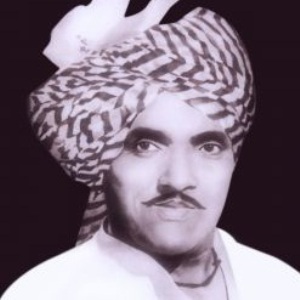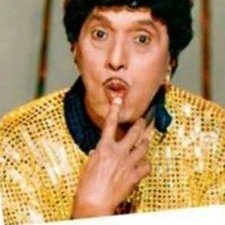

Based on a story by Vasant Sabnis, the film was directed by Govind Kulkarni. Two years later, Dada Kondke debuted as a film producer with Songadya (1971).

The film, also featuring Lalita Pawar and Asha Kale, won the National Film Award for Best Feature Film in Marathi. In 1969, Dada Kondke debuted in Marathi films with Bhalji Pendharkar's Tambdi Maati. And with it, Dada Kondke can be said to have arrived. The play was staged at over 1500 shows across Maharashtra. Sabnis went on to write a modern Marathi language Tamasha or Loknatya (folk play) for Kondke, titled Vichha Majhi Puri Kara. In time, Kondke established his own theatre company, and approached Sabnis to pen a drama script for him. His work brought him in contact with personalities from the Marathi stage, such as writer Vasant Sabnis.

Working for various drama companies, he toured the state, gaining an understanding of the pulse of the local people.

Kondke started his career in entertainment with a band, moving on to join theatre as a stage actor. He became determined to focus more on the lighter side of life and to make people laugh. Taking up work in a local grocery retail chain called Apna Bazaar, Kondke’s mindset was impacted by the demise of close family members, owing to unfortunate events. With the Kondke family originally hailing from the village of Ingavali, near Pune, he and his migrant family stayed rooted to their rural antecedents. His family members were also foreman handling millworkers of Bombay Dyeing. His family also owned a grocery shop and chawls in the Morbaug area of the city. He entered into the Guinness Book of World Records for the highest number of films (9) that ran for 25 consecutive weeks, thus achieving silver jubilee.īorn into a mill worker’s family in Naigaon, Central Mumbai on 8 August, 1932, on the festival of Gokulashtami, he was named Krishna in honour of the birth of Lord Krishna. He worked regularly with actress Usha Chavan, screenplay writer Rajesh Mujumdar, music director Raam Laxman, Jayawant Kulkarni followed by Mahendra Kapoor as the male playback singer and Usha Mangeshkar as female playback singer, and Bal Mohite as chief assistant. Kondke considered always working with the same team of actors, technicians and playback singers as a key aspect of his success. He is known for Marathi and Hindi films such as Andhala Martoy Dola (1973), Pandu Hawaldar (1975), Chandu Jamadar (1977), Ram Ram Gangaram (1977), Bot Lavin Tithe Gudgulya (1978), Hyoch Navra Pahije (1980), Ram Ram Amatharam (1981), Aali Aangavar (1982), Tere Mere Beech Mein (1984), Andheri Raat Mein Diya Tere Haath Mein (1986), Muka Ghya Muka (1987), Mala Ghevun Chala (1988), Aage Ki Soch (1988), Khol De Meri Zuban (1989), Palva Palvi (1990), Sasarche Dhotar (1994), and Vajau Ka? (1996). Conversant with what entertainment meant to the common people, his films targeted the masses. Credited with introducing the genre of sex comedy to Marathi cinema, he was known for his double entendre dialogues in films. Veteran actor, producer and director Krishna Kondke, better known as Dada (an honorific in Marathi that means elder brother) Kondke, was a well-known personality of the Marathi film industry.


 0 kommentar(er)
0 kommentar(er)
